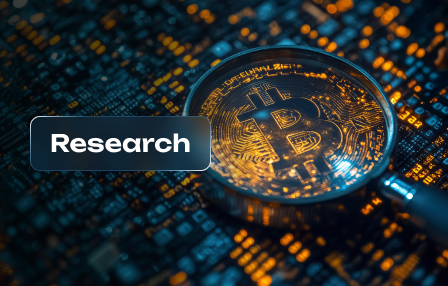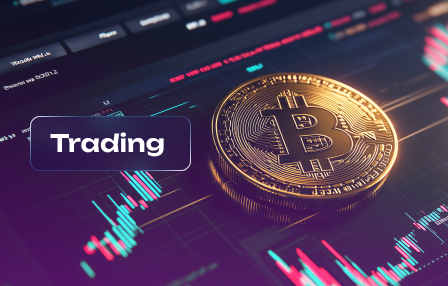NFTs in 2025 – Still a Thing or Already Over?
May 2, 2025
Investors should focus on NFTs as a diversified asset class by 2025. The market for non-fungible tokens is projected to expand significantly, driven by advancements in blockchain technology and the growing acceptance of digital art as a legitimate form of investment. Collectibles are evolving beyond mere novelty items into valuable assets that can yield substantial returns.
The intersection of technology and art will define future trends in the NFT space. Artists and creators are leveraging blockchain to authenticate their work, ensuring provenance and rarity. This shift not only enhances the value of digital art but also appeals to collectors seeking unique pieces that cannot be replicated. As demand increases, new platforms dedicated to showcasing and trading NFTs are expected to emerge, further fueling market growth.
However, challenges remain. Regulatory scrutiny around digital assets may impact how NFTs are bought, sold, and taxed. Investors must stay informed about these developments to navigate potential pitfalls effectively. Understanding the nuances of this evolving landscape is essential for capitalizing on opportunities while mitigating risks associated with volatility and speculation.
NFTs in 2025: Trends, Future Prospects and Challenges
Focus on integrating NFTs into mainstream art markets, as the demand for digital collectibles continues to rise. By 2025, collaborations between traditional artists and digital platforms will solidify the value of NFTs in the art sector. Artists should consider tokenizing limited editions to create scarcity, enhancing their market appeal.
The investment landscape is shifting towards fractional ownership of high-value NFTs, allowing more investors to participate in premium assets. Platforms facilitating these transactions are expected to gain traction. Investors must analyze market trends carefully; understanding the utility behind each NFT will become crucial for future profitability.
Technological advancements will address environmental concerns surrounding blockchain energy consumption. The move towards eco-friendly solutions will enhance user confidence and attract a broader audience. Stakeholders should stay updated on green technologies and prioritize platforms that utilize sustainable practices.
Market volatility remains a challenge. Investors should employ risk management strategies when entering the NFT space. Diversifying portfolios with both established and emerging NFT projects can mitigate potential losses while capturing growth opportunities.
As regulatory frameworks evolve, compliance will play an increasingly important role in shaping market dynamics. Engaging with legal experts can help navigate emerging regulations effectively, ensuring adherence while maximizing operational capabilities.
The intersection of augmented reality (AR) and NFTs will redefine how users interact with digital assets. Brands should explore AR integration to enhance user engagement and create immersive experiences around their collectibles, thus driving sales and brand loyalty.
Market Growth Predictions
By 2025, the NFT market is projected to exceed $100 billion in valuation, driven by increased investment in digital art and collectibles. Analysts anticipate that technological advancements in blockchain will enhance transaction efficiency and security, attracting a broader range of investors.
The integration of NFTs into various industries, including gaming, entertainment, and fashion, will likely contribute significantly to market expansion. Brands are expected to leverage NFTs for exclusive digital merchandise, creating new revenue streams and engaging consumers through unique experiences.
Investment trends indicate a growing interest in fractional ownership models, allowing more individuals to participate in high-value NFT acquisitions. This democratization of access is anticipated to expand the user base and drive up demand for diverse digital assets.
As utility-based NFTs gain traction–offering real-world benefits like access to events or services–the market will evolve beyond mere collectibles. This shift could solidify NFTs as a fundamental component of digital economies.
Challenges such as regulatory scrutiny and environmental concerns related to blockchain technology may pose risks. However, ongoing innovations aimed at reducing energy consumption associated with NFT transactions are expected to mitigate these issues over time.
Overall, the NFT market’s trajectory suggests robust growth prospects, fueled by technological innovation and evolving consumer preferences within the digital landscape.
Technological Innovations Impact
The integration of advanced technologies into the NFT space will significantly reshape its landscape by 2025. Blockchain scalability solutions, such as Layer 2 protocols, will enhance transaction speeds and reduce costs, making NFTs more accessible for digital investment. Platforms utilizing these solutions are expected to gain traction, leading to an increase in user adoption.
Artificial intelligence (AI) is set to play a pivotal role in the creation and curation of digital collectibles. AI-driven algorithms can analyze market trends and user preferences to suggest optimal pricing strategies for NFTs. This data-driven approach empowers creators and investors alike, driving greater engagement and profitability.
Furthermore, augmented reality (AR) and virtual reality (VR) technologies are anticipated to elevate the experience of interacting with digital art and collectibles. By creating immersive environments where users can showcase their assets, these technologies enhance the perceived value of NFTs while attracting new audiences.
Here is a summary table highlighting key technological innovations impacting NFTs by 2025:
The convergence of these technologies not only expands the utility of NFTs as investment assets but also addresses challenges related to sustainability and user experience. Stakeholders should prioritize adopting these innovations to remain competitive in a rapidly evolving market.
Regulatory Landscape Changes
In 2025, the regulatory environment for NFTs will likely undergo significant transformations. Governments are expected to establish clearer frameworks governing digital assets, addressing concerns related to taxation, copyright, and consumer protection. Countries with proactive stances on blockchain technology may attract more NFT investments, while others could experience market stagnation due to stringent regulations.
Anticipate increased collaboration between regulatory bodies and industry stakeholders. This partnership can facilitate the development of guidelines that balance innovation with security. The emergence of self-regulatory organizations within the NFT space may enhance credibility and foster trust among investors and consumers alike.
Compliance requirements are predicted to become more rigorous. Market participants should prepare for mandatory reporting standards and KYC (Know Your Customer) protocols tailored for digital assets. Platforms facilitating NFT transactions might need to adapt their operational models to meet these evolving legal obligations.
The rise of fractional ownership in NFTs will also prompt regulatory scrutiny. As investors seek to tokenize high-value assets, regulators will likely implement rules addressing the risks associated with shared ownership structures. Clear definitions of what constitutes an investment contract under securities laws will be crucial.
Furthermore, international cooperation on NFT regulation is essential in a globalized market. Cross-border initiatives could standardize practices, reducing friction for artists and collectors operating in multiple jurisdictions. This harmonization would contribute to a more robust marketplace that benefits all participants.
Consumer Adoption Rates
By 2025, consumer adoption rates of NFTs are projected to reach approximately 30-40% among digital asset holders. This increase is driven by the growing acceptance of blockchain technology and its application in collectibles, gaming, and investment sectors.
The rise in mainstream platforms integrating NFTs will contribute significantly to these rates. Major brands across various industries are expected to launch NFT campaigns, enticing consumers with unique digital assets that offer both utility and exclusivity.
Investment trends indicate that younger demographics, particularly Gen Z and Millennials, are leading the charge in adopting NFTs as a form of investment. Reports suggest that 60% of these consumers view NFTs as viable financial assets rather than mere collectibles.
Furthermore, advancements in user-friendly technologies will lower barriers to entry for new users. Simplified wallet setups and educational resources will enhance understanding and engagement with NFT markets, fostering a more informed consumer base.
Challenges remain; issues related to environmental concerns and market volatility could hinder widespread acceptance. Clear communication about sustainable practices in blockchain technology will be vital to mitigate these risks and boost consumer confidence.
Overall, strategic partnerships between tech companies and traditional brands can facilitate smoother transitions into NFT markets for consumers, ultimately driving higher adoption rates through innovative offerings and enhanced accessibility.
Sustainability Issues Ahead
Addressing sustainability in the NFT market requires immediate action from stakeholders. The environmental impact of blockchain technology, particularly energy consumption, poses a significant challenge for future growth.
- Energy-efficient blockchains: Transition to proof-of-stake (PoS) networks that drastically reduce energy usage compared to traditional proof-of-work systems. Ethereum’s shift to PoS is a prime example.
- Carbon offset initiatives: Encourage NFT platforms to invest in carbon offset projects. This not only mitigates their environmental footprint but can also enhance brand image and attract eco-conscious investors.
- Sustainable art practices: Promote artists who utilize eco-friendly methods in creating digital art. Highlighting these practices can appeal to consumers looking for responsible collectibles.
- User education: Provide resources on the environmental implications of NFTs. Educated consumers are more likely to support sustainable projects and demand transparency from creators and platforms.
The future market for NFTs hinges on addressing these sustainability issues effectively. Failure to do so could alienate a growing segment of environmentally aware collectors and investors, ultimately impacting market viability and growth potential.
- Focus on developing green technologies within blockchain frameworks.
- Encourage collaboration between artists and tech developers to create innovative solutions for sustainability.
- Advocate for regulations that prioritize eco-friendly practices in the NFT space.
Tackling these challenges head-on will not only fortify the integrity of digital assets but also ensure their relevance as viable investments in the future marketplace.



